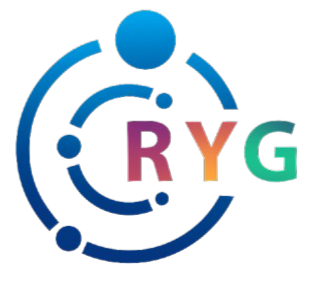1. Understanding Player Perception: How Reward Symbols Influence Expectations and Behavior
In the realm of modern gaming and gambling, symbols are more than mere decorative elements; they are powerful cognitive tools that shape player perception and drive engagement. Visual cues such as shiny coins, shimmering gems, or iconic icons like four-leaf clovers serve as subconscious signals that influence players’ expectations about potential rewards. Research indicates that players often interpret these familiar symbols as indicators of luck or impending success, which heightens anticipation and motivates continued play.
Cognitive biases like the familiarity bias make players more likely to trust and pursue symbols they recognize, reinforcing their belief in the game’s fairness or the likelihood of winning. For example, a slot machine featuring a well-known fruit symbol may elicit more engagement than an obscure icon, even if both are statistically equivalent. These perceptions are further reinforced through emotional responses; a bright, colorful symbol can evoke feelings of hope or excitement, reinforcing the motivation to continue, especially during near-miss moments where the visual cues hint at imminent success.
2. The Emotional and Psychological Impact of Reward Symbols
Reward symbols act as emotional triggers that can generate hope and excitement within gaming environments. For instance, the appearance of a jackpot symbol often triggers a surge of dopamine, reinforcing the connection between visual cues and positive emotional states. This neurochemical response not only increases the likelihood of continued engagement but also cultivates a perception of value or luck associated with specific symbols.
Design elements such as color, shape, and animation influence how players perceive the significance of symbols. Gold or shimmering effects are commonly used to signify higher value or potential jackpots, which can lead players to display increased patience or, conversely, impulsivity if they believe a reward is imminent. This emotional engagement is crucial for maintaining player interest, but it also underscores the importance of responsible design to prevent over-optimistic perceptions that may lead to problematic gaming behaviors.
3. Cultural and Personal Factors in Symbol Recognition and Response
The interpretation and emotional resonance of reward symbols are deeply influenced by cultural context. For example, while the color red is associated with luck and prosperity in Chinese cultures, it might evoke different connotations elsewhere. Similarly, symbols such as horseshoes or four-leaf clovers are culturally loaded with meaning that can significantly affect player response.
Personal experiences and memories also play a role; a player who associates a particular symbol with a positive past or a personal milestone may find it more appealing and motivating. Therefore, personalized gaming experiences often incorporate adaptive symbols that cater to individual backgrounds, increasing engagement through emotional relevance. This personalization reinforces the connection between the player and the game, making rewards feel more meaningful.
4. The Neuroscience of Reward Symbols: Brain Responses and Engagement
Underlying the psychological effects of reward symbols are neural pathways activated during gameplay. Functional MRI studies reveal that visual stimuli associated with rewards activate the brain’s mesolimbic pathway, primarily involving the nucleus accumbens, which is central to the sensation of pleasure and motivation.
Specifically, the sight of a rewarding symbol can trigger dopamine release, a neurotransmitter linked to reward anticipation and reinforcement learning. This process creates a feedback loop whereby the brain associates certain visual cues with positive outcomes, increasing the likelihood of repeated engagement. Moreover, the interplay between visual stimuli and reward anticipation heightens arousal levels, making the gaming experience more immersive and compelling.
5. Behavioral Economics and Symbolic Incentives
From a behavioral economics perspective, symbols influence perceived value and decision-making. For example, a symbol that appears to denote a “special” or “bonus” reward can lead players to overvalue that outcome, encouraging riskier bets or more persistent play. This phenomenon, often described as perceived utility bias, demonstrates how symbolic cues can distort rational assessment of odds and value.
Psychological pricing strategies also leverage symbols; for instance, using a star or a crown symbol next to a payout percentage can psychologically enhance the perceived generosity of the game, even if the actual odds remain unchanged. Such tactics increase player confidence and willingness to wager more, reinforcing the importance of thoughtful symbol design in shaping economic behavior within gaming contexts.
6. Design Strategies: Crafting Symbols to Maximize Engagement and Loyalty
Effective symbol design employs psychological principles such as familiarity, contrast, and dynamism. Incorporating familiar icons can foster instant recognition and trust, while introducing novelty maintains curiosity and interest. For example, a game might use classic fruit symbols but rotate their color schemes or animations to keep the visual experience fresh.
Dynamic and adaptive symbols—those that change based on player progress or game state—can sustain long-term engagement. For instance, a symbol that evolves from a simple icon into a glowing, animated reward as the player nears a payout leverages the brain’s attraction to novelty and progression. Such design strategies are supported by research indicating that variability in visual stimuli enhances dopamine-driven motivation.
7. Ethical Considerations: Navigating the Power of Symbols in Player Psychology
While symbols serve as powerful engagement tools, they also carry ethical responsibilities. Over-reliance on symbolic cues can manipulate players’ perceptions, leading to overconfidence or compulsive behaviors. Transparency in symbolism—such as clearly indicating odds or outcomes—helps promote responsible gaming.
Designers should strive to create symbols that encourage healthy engagement. For example, avoiding overly aggressive animations or misleading imagery ensures that players are not misled about their chances. Implementing features like cooldown indicators or loss limits can further support responsible play while maintaining the motivational power of symbolic design.
8. Connecting Back: How Psychological Insights Enhance the Original Framework of Rewards
Integrating a deep understanding of player psychology into reward feature development enriches the overall gaming experience. Recognizing how symbols influence perception, emotion, and behavior enables designers to craft more meaningful and engaging reward systems. For instance, aligning symbol design with cultural and personal relevance can heighten emotional attachment and loyalty.
As discussed in Unlocking Chance: How Symbols and Features Drive Modern Rewards, the careful application of symbolic cues is a core element in unlocking the true potential of chance-based games. By leveraging psychological insights, developers can create reward systems that are not only enticing but also ethically responsible, fostering sustainable player engagement and trust.



Leave a Reply